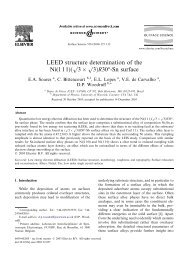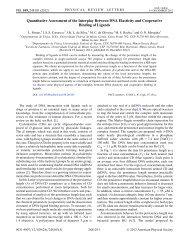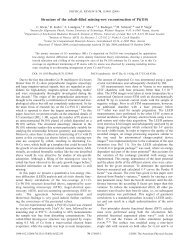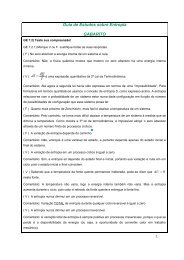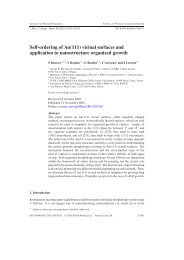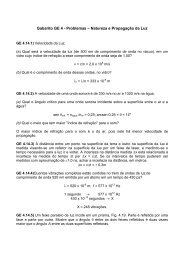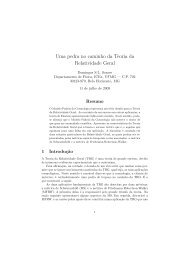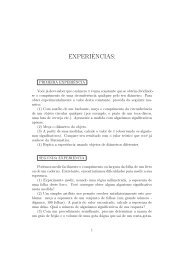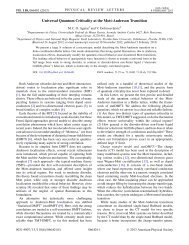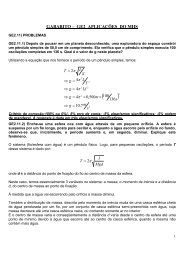Fundamental Statistical Mechanics
Fundamental Statistical Mechanics
Fundamental Statistical Mechanics
Create successful ePaper yourself
Turn your PDF publications into a flip-book with our unique Google optimized e-Paper software.
9. The Baker's transformation<br />
9.1 Transformation and Properties<br />
We consider an example which well illustrates the application of ideas from chaotic dynamical<br />
systems to statistical mechanics, the baker's map. We take the phase space to be the unit square<br />
0 ≤ x, y ≤1. The transformation consists of two steps: first the unit square is contracted by a<br />
factor 2 in the y direction and expanded by a factor 2 in the x direction; then the rectangle is cut<br />
in the middle and the right half placed on top of the left half. This doesn't change the volume,<br />
and the transformation is reversible.<br />
To write an express the transformation mathematically we need to distinguish between x < 1 2 and<br />
x ≥ 1 2 , so if (x,y) → ( x ′ , y ′ ) = b(x,y).<br />
For x < 1 2<br />
⎧ x ′ = 2x<br />
⎨<br />
⎩ y ′ = y 2<br />
and for x ≥ 1 2<br />
⎧ x ′ = 2x −1<br />
⎨<br />
⎩ y ′ = (y +1) 2<br />
The inverse of the baker's transformation (x,y) → ( x ′ , y ′ ) = b −1 (x, y)<br />
For y < 1 2<br />
⎧ x ′ = x 2<br />
⎨<br />
⎩ y ′ = 2y<br />
and for y ≥ 1 2<br />
9.2 A Model Boltzmann Equation<br />
⎧ x ′ = (x +1) 2<br />
⎨<br />
⎩ y ′ = 2y −1<br />
It is possible to derive a "Boltzmann equation for the time-reversible baker's transformation and<br />
to show that a H -theorem holds for this equation. Here then is one example where the program<br />
of Boltzmann can be carried out in detail. The price we pay for the simplicity of the model is a<br />
lack of physical motivation. We will have to supply some of that as we go along.<br />
Consider a density-function ρ(x,y) on the unit square, that satisfies a Liouville equation for<br />
discrete time:<br />
where<br />
ρ n (x, y) = ρ n −1 (b −1 (x), b −1 (y))<br />
⎧ ρn−1 (x 2,2y) for y 1 2<br />
<strong>Statistical</strong> <strong>Mechanics</strong> Page 41



